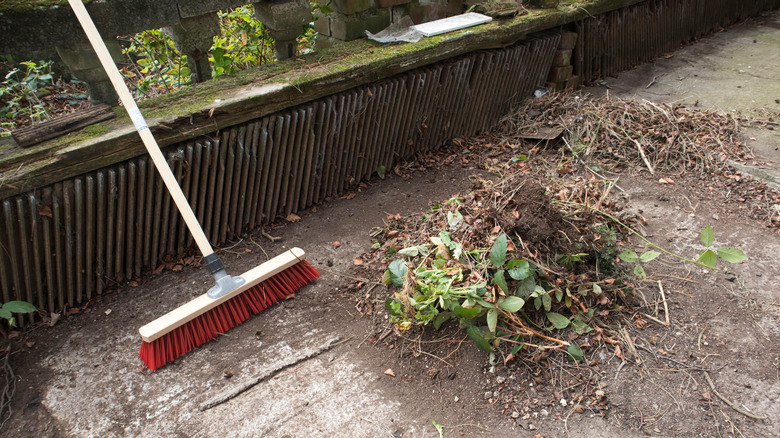Can Aluminum Foil Help Protect Your Home From A Fire?
Wildfires have been increasing in size, length, and strength, due to factors like a warming climate, increasing droughts, and flammable invasive species. Whether you're a homeowner or renter, you may be understandably worried about losing your space and belongings in a fire.
Online photos and anecdotal advice have suggested what seems like an easy solution: aluminum foil. It's true that foil is fireproof — it's designed to stand up well to heat, such as with a foil-wrapped potato baking in a campfire. Aluminum is used to make fire shelters carried by firefighters in the field. Firefighters have even used wraps made of aluminum to protect sequoia trees from flames.
However, even in massive quantities, common kitchen foil won't do much good against a wildfire. While aluminum is used in some fire-protection products, they're far more powerful than the flimsy sheets of aluminum foil used for cooking. There are other, more effective steps you can take to protect your home and belongings — but don't rely on aluminum foil in a fire-related emergency.
Why aluminum foil won't work against wildfires
The aluminum products firefighters use are much different from kitchen foil. They're made of thick aluminum that doesn't tear easily: closer in design to a blanket than a sheet of paper. They also tend to contain a mix of ingredients. Aluminum fire shelters, for example, also use materials like fiberglass, which make them stronger and more fire resistant.
Aluminum foil simply isn't designed for the extreme heat and conditions wildfires produce. A wildfire's heat and power is a far cry from that of an oven or a campfire. While a wildfire may not totally destroy aluminum, the metal's melting point is 1,220 degrees Fahrenheit. Wildfires, meanwhile, typically reach about 1,500 degrees, and can exceed 2,000 degrees Fahrenheit in extreme conditions.
Today's wildfires also tend to be fast-moving and unpredictable. Even if aluminum foil could protect your home, the chances that you'd have time to buy enough and wrap your house before evacuating are slim.
Fire protection ideas that can work
You can actually use aluminum to protect your home — just not in the form of regular aluminum foil. One option is to buy engineered aluminum cabin wraps and apply them yourself. They can be effective if they're wrapped tightly and thoroughly, leaving no space for sparks or embers to get through.
However, wrapping a house tends to cost thousands of dollars, and doing it correctly takes several hours at minimum. You'll need additional equipment, too, like ladders and staples. This generally isn't a one-person job, and while it can help, it's not a fire-protection guarantee. Cabin wraps are designed to protect structures for short periods of time, but in residential areas with lots of flammable materials, fire tends to linger much longer.
So, for the average homeowner or renter, cabin wraps aren't the best choice. Instead, try simple-but-effective techniques, like clearing dry plant matter from around your home. Invest in a fire-proof safe to keep your most essential belongings secure no matter what.
Don't forget to prepare yourself as well as your home. If you live in a fire-prone area, keep a "go bag" packed with essentials like medications and important documents. Always follow local evacuation instructions, and actively seek out news rather than waiting for updates to find you. Most importantly, never forget that your personal safety is more important than that of your home and belongings.


